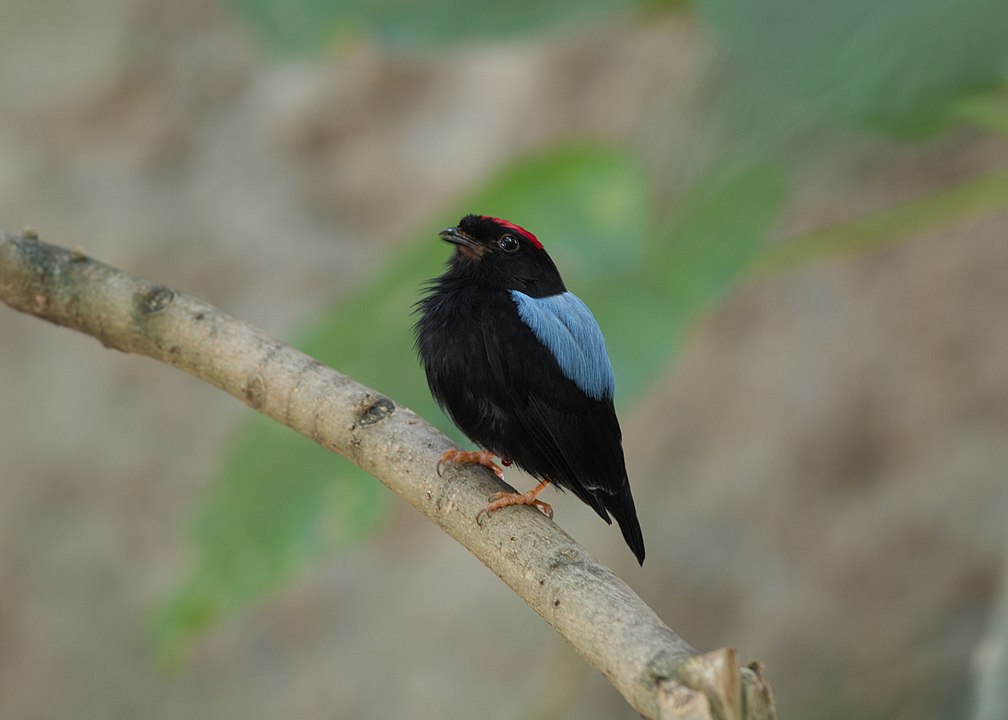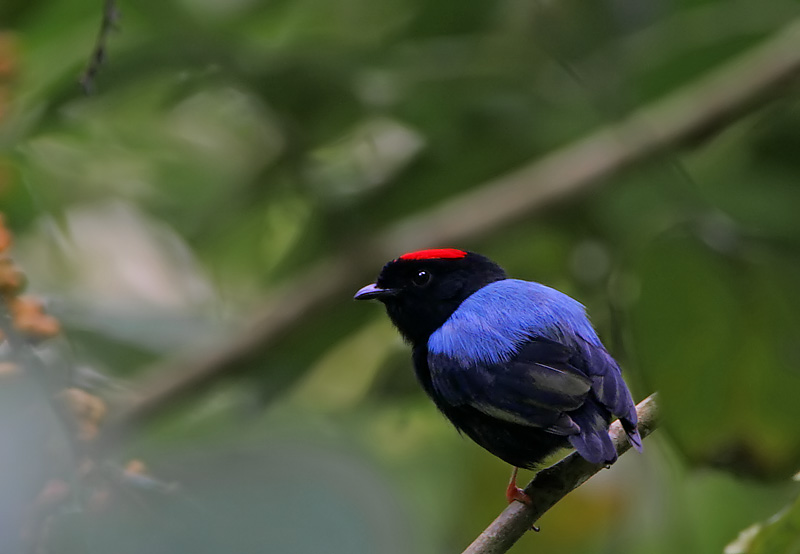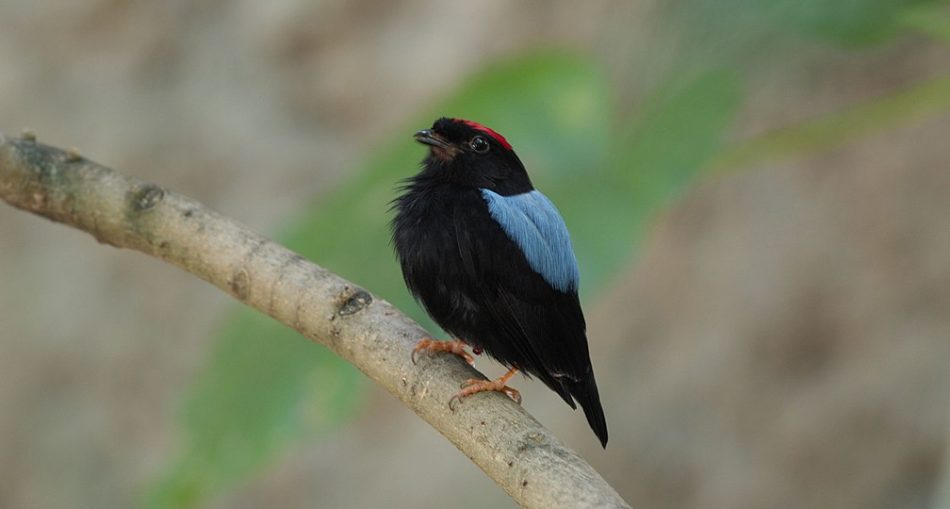The Blue-Backed Manakin is a plump black bird, with a distinctive crown of red and a striking blue back. There are four (4) subspecies of the Blue-Backed Manakin (Chiroxiphia pareola) with little differences. They are the Chiroxiphia pareola regina, Chiroxiphia pareola napensis, Chiroxiphia pareola pareola and Chiroxiphia pareola atlantica. The Blue-Backed Manakin is native to Bolivia, Guyana, southern Colombia, the eastern Amazon Basin in Brazil and northeast Brazil, Ecuador, Peru, Tobago and Venezuela. However, it cannot be found in the northwest Amazon Basin. The Blue-Backed Mankin is a fruit-eater who prefers the understory of the forest. You can find them by listening for a loud, single call note but the males will make weird sounds in a synchronised group display.

The Blue-Backed Manakin on a limb- Photo By Norbert Potensky – Own work, CC BY-SA 3.0, https://commons.wikimedia.org/w/index.php?curid=2595996
Description Of The Blue-Backed Manakin
The Blue-Backed Manakin is a squat, tiny bird about thirteen (13) cm in length with an average weight of nineteen (19) g. The male and female look somewhat different from the other but both share pale orange legs. The male Blue-Backed Manakin is primarily black but has a vivid blue back. The upper parts of the female are olive-green with light olive underparts. Crowns are usually red but in the south-west Amazon, the Chiroxiphia pareola regina has a yellow crown. The young males are olive in colour, with a red cap and the glimpse of a blue back as they begin to mature. Their beaks are very small compared to their large head and body.

Blue-backed Manakin – Photo By Steve Garvie from Dunfermline, Fife, Scotland – Blue-backed Manakin (Chiroxiphia pareola)Uploaded by Snowmanradio, CC BY-SA 2.0, https://commons.wikimedia.org/w/index.php?curid=12717046
Scientific Classification Of The Blue-Backed Manakin
- Kingdom: Animalia
- Phylum: Chordata
- Class: Aves
- Order: Passeriformes
- Family: Pipridae
- Genus: Chiroxiphia
- Species: C. pareola
Habitat Of The Blue-Backed Manakin
The Blue-Backed Manakin inhabits dry and moist deciduous forests of riverine areas and gallery forests. It prefers the forest understory but may go up into the canopy. The bird, however, does not live in rainforests.
Diet Of The Blue-Backed Manakin
The diet of Blue-Backed Manakin primarily consists of fruits but the small bird will also eat some insects like other manakins. The bird can be found near fruit-bearing shrubs and trees.
Reproduction Of The Blue-Backed Manakin
The breeding display of the male Blue-Backed Manakin is highly unusual since it is a coordinated display as opposed to a competitive display. The males, perched next to the other would take turns jumping up and down making a buzzing cal. when approached by a female the bird on the perch would move backwards under the jumping bird, performing a vertical circling movement.
After building a twig nest in a tree, the female lays two (2) brown speckles white eggs and incubate them by herself for an approximate period of twenty (20) days. The male Blue-Backed Manakin does not partake in the care of the young.
7 Facts About The Blue-Backed Manakin
- There are four (4) subspecies of the Blue-Backed Manakin i.e. Chiroxiphia pareola regina, Chiroxiphia pareola napensis, Chiroxiphia pareola pareola and Chiroxiphia pareola atlantica.
- There is a disjointed population of Blue-Backed Manakin on the coastal strip of southeast Brazil, extending about three thousand (3000) km in length.
- The bird cannot be found in the northwest Amazon Basin, a region extending from central Venezuela to the southern border of Colombia.
- Chiroxiphia pareola atlantica which is native to Tobago has a larger red crown and is more similar to the lance-tailed manakin, Chiroxiphia lanceolata.
- The Blue-Backed Manakin lives in the forest understory but may leap into the canopy during courtship displays.
- Blue-Backed Manakins performs cooperative displays in groups of up to eight (8) birds but each pair uses a separate perch.
- Another call of the Blue-Backed Manakin is ‘whee-whee-CHUP’.
About The Blue-Backed Manakin
The Blue-Backed Manakin can easily be distinguished by its striking blue back on its glossy, black body and red crown. The stout little bird performs spectacular courtship displays in pairs of males and has a unique ‘hee-whee-CHUP’ call.







